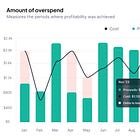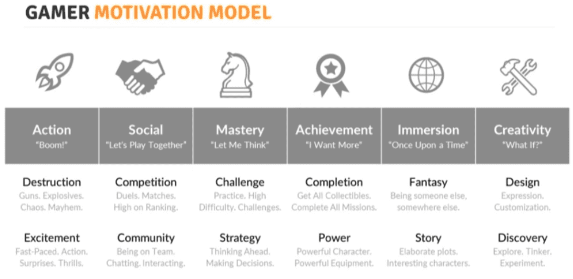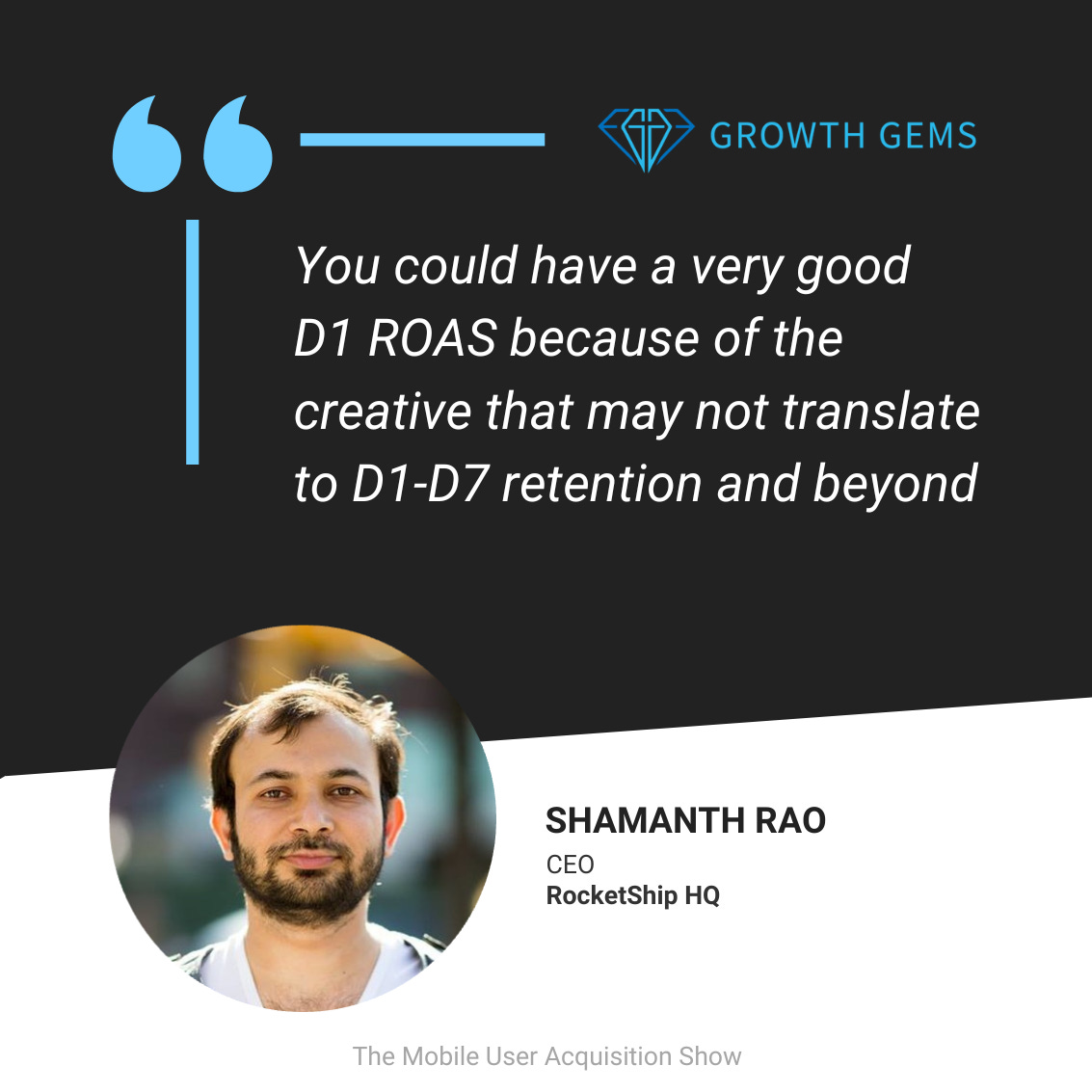💎 Growth Gems #113 - Paid Acquisition on Meta and Retention
Fellow growth practitioners!
I’ve dug up more gems 💎 during my last shift in the growth mine. This week, I’m bringing you back insights on:
Mined from the depths, I hope these hard-dug insights from Marcus Burke, Sharath Kowligi, and Shamanth Rao bring you value.
Sylvain - Chief Insights Miner ⛏️
🥇 TOP GEM OF THE WEEK
SPONSORED INSIGHT & RESOURCE
It was only a matter of time before AI could be leveraged for store experiments!
Phiture’s AI Labs built PressPlay to fully automate A/B tests on the Google Play Store (iOS coming soon!) for the following (so far): icon, screenshot order, feature graphic, and short description. Plus, it allows for localization at scale.
The results the Wildlife Studios team got by using PressPlay are impressive, and they combined it with qualitative feedback for maximum impact 👇
Phiture has a few places left in Q2 to onboard selected early adopters with PressPlay…Contact them here today so you don’t miss out (requires 100k+ monthly Android installs):
How does it work?
At the heart of PressPlay is an Automated Experiment Assistant built for each title, trained on the app’s information, the competitive landscape, and customer reviews, as well as all historical wins and losses so it better understands what works and what doesn’t.
Running 500+ concurrent experiments…Pretty powerful stuff!
Paid Acquisition: campaign optimization, thinking full-funnel, creatives
Gems from Marcus Burke (UA & Growth Consultant) in Scaling Your Subscription App with Meta Ads on the Sub Club podcast
I like to think that when I started sharing the growth gems I mine in 2020, I contributed to elevating the quality of LinkedIn content in mobile growth.
Well, Marcus took things to the next level there and is the record owner of mentions in the #LinkedInGems I share every Sunday.
He hasn’t appeared on a lot of podcasts, though.
My first descent to mine some of his content was last summer (cf. Growth Gems #97); this time, he shared several more valuable insights.
Campaign optimization
💎 First-party data you can collect to get better at UA:
Ask a “How Did You Hear?” question during onboarding so you can have sample data and better understand channel-level performance and differences between channels
Ask an Age and Gender question during onboarding so you can understand post-install performance by age group (e.g., trial conversions, realized LTV) and cross-check with the Age and Gender data from Meta. Example: age group 45-54 is 5x more valuable than 18-24. Is your CPI for 18-24 also 5x lower?
(16:20)
Marcus rightfully mentioned that a trial doesn’t bring real business value and that trial conversion can vary massively depending on the audience, even on the same “channel” (e.g., on Facebook, older audiences typically convert at a higher rate).
💎 You need to find the balance between:
Granularity (because you know some specific audiences convert better - e.g., geos or age groups)
Maximizing signal on each of your campaigns and remaining above privacy thresholds.
Start consolidated, and as you add spend, you can add ad sets.
(24:40)
You don’t want to scatter data, making it hard for Meta’s algorithm to get a signal.
💎 You shouldn’t evaluate Meta results 3-4 days after starting your app campaigns because Meta gets events a bit later. For the first 2 days, you also won’t see any results, and you’ll need to match the data from 2 days ago with the appropriate spend level.
(27:08)
💎 AEM (Aggregated Event Measurement) is a great tool that can help advertisers (especially if they have high CPIs), but it is also a black box that uses IP addresses. Test and scale it if it works, but be cautious and still invest in your SKAN strategy if Apple takes things away.
(53:40)
AEM seems to divide advertisers…Here is a LinkedIn post (and insightful comments) where I weigh the benefits and challenges:
Thinking full-funnel
💎 UA managers must be more product-focused and look into full-funnel performance to find new growth levers since much of the network algorithm efficiency is gone. Use Meta as a channel for experimentation to find angles you can use for marketing/copywriting, and bring these learnings to your App Store listing and the onboarding funnel.
(35:30)
💎 Your onboarding and monetization need to align with what you’re doing on Meta. If you’re getting a lot of traffic from reels and using many UGC videos, which might be driving younger traffic, then your onboarding and pricing need to fit that strategy.
(37:15)
This also reminded me of a gem from Yuliya Lennox (CMO at Replika) that I shared in Growth Gems #107, where she said you need to “choose the subscription mix that has a good fit with the marketing activities that you’re running”. More on this here (towards the end)👇
Creatives
💎 Creative diversity determines placement performance. There are totally different apps and audiences behind each of Meta’s placements. Example: Facebook vs. Instagram, but also Instagram Reels (low-priced, younger audience) vs. Instagram feed (more expensive, older audience). Use the different Meta apps and understand the different placements to make your creatives as “native” to each placement as possible.
(33:00)
Marcus shared that there is value in studying competitors’ ads, but advertisers often forget to study those placements.
When was the last time you scrolled a Facebook feed?
💎 For creatives, look outside your bubble and follow some sites you would not usually follow because the content your target audience sees is much more diverse than your own feed. For example, Marcus looks at a broad spectrum of news sites on Instagram and Facebook (even Fox News.)
(49:40)
💎 Always test your creatives in a separate campaign but in a similar environment to where you’ll end up using them (optimization event AND geo).
(50:45)
I reached out to Marcus, and he had more advice to give on several of the gems above. Check out his LinkedIn post below:
Retention: winning D0
Gems from Sharath Kowligi (Performance Marketing Advisor) in Winning Day 0: Unlocking Early Retention For Downstream Growth on the Mobile User Acquisition Show
The first time I mined gems from Sharath was on Growth Gems #4 (Learnings From 200+ App Store Conversion Tests)!
This discussion was completely different, as he and Shamanth discussed early retention and creatives.
💎 Session one and session two problems are different:
Session one: technical obstacles like software not loading or the game being unintelligible
Session two: users failed to find value in the product and did not return.
To address session two, make sure the promises made in ads and the game’s features align with users’ expectations.
(09:27)
💎 The first 10 minutes and Day 0 are highly actionable and cost-effective to test. You can use benchmarks from intelligence tools like Sensor Tower to understand how well you’re doing.
(11:25)
Here’s what one of the retention charts looks like on Sensor Tower (courtesy of Tom Cui):
You can also access the peer group benchmarks in App Store Connect:
If you’re lucky enough (read: big enough) to have contacts/relationships with Google and Apple, they can also share more extensive benchmarks vs. a group of peers.
💎 If you’re getting low CPIs but poor D0/D1 retention, consider integrating the game mechanics shown in the creative into the game. Frame it as having marketing research showing that people are responding to this visual or mechanic.
(14:00)
This could be true with a specific motivation your creative is tapping into: how can you translate that into the product?
To learn more about leveraging these motivations, check out the Gamer Motivation Profile and A Deep Dive into the 12 Player Motivations talks by Nick Yee (Co-founder & Analytics Lead at Quantic Foundry - Game Analytics Consulting Practice). Reach out if you want the gems from these talks; I’m happy to share them.
💎 Ad creatives definitely impact your D1-D7 retention, even on the same channel and with the same targeting, because you will get different traffic. Example: Sharath mentioned an ad leaning more towards “boring gameplay” that showed a 10-20% lift in D1 retention.
(15:03)
Marcus Burke also mentions “creating ads that a warm audience will recognize”, and following up on prospecting ads. Below is an extract from his Meta iOS Creative Strategy Guide.
💎 To get Day 7 and onwards retention right, you need to get the core needs of the user right, which means all 3 of those things have to work:
Marketing: the ad
Marketing design: the story
Game design: the game mechanic
Achieving internal consensus on these is challenging yet essential for market acceptance.
(15:32)
💎 You must be mindful that a D1 ROAS but poor retention doesn’t mean: your ad is great, but your game is not. The wrong ad may attract the wrong people!
(17:25) by Shamanth
Shamanth mentioned that a bad ad that looks good in terms of performance can change a company's trajectory.
💎 You’re really fighting for people’s attention. If you have a product showing metrics that make you believe in it, it makes sense to re-engage users (via email, paid ads, etc.) on D0 (session 2), D1, D3, first-weekend post-install, and then before each Live Op.
(21:10)
Before I leave, here is a comment from Nathan Hudson on a LinkedIn post about bid caps:
“Bid caps are the marmite of user acquisition”
See you next time.
Stay curious!
⛏️ Sylvain
🔗 Sources:














